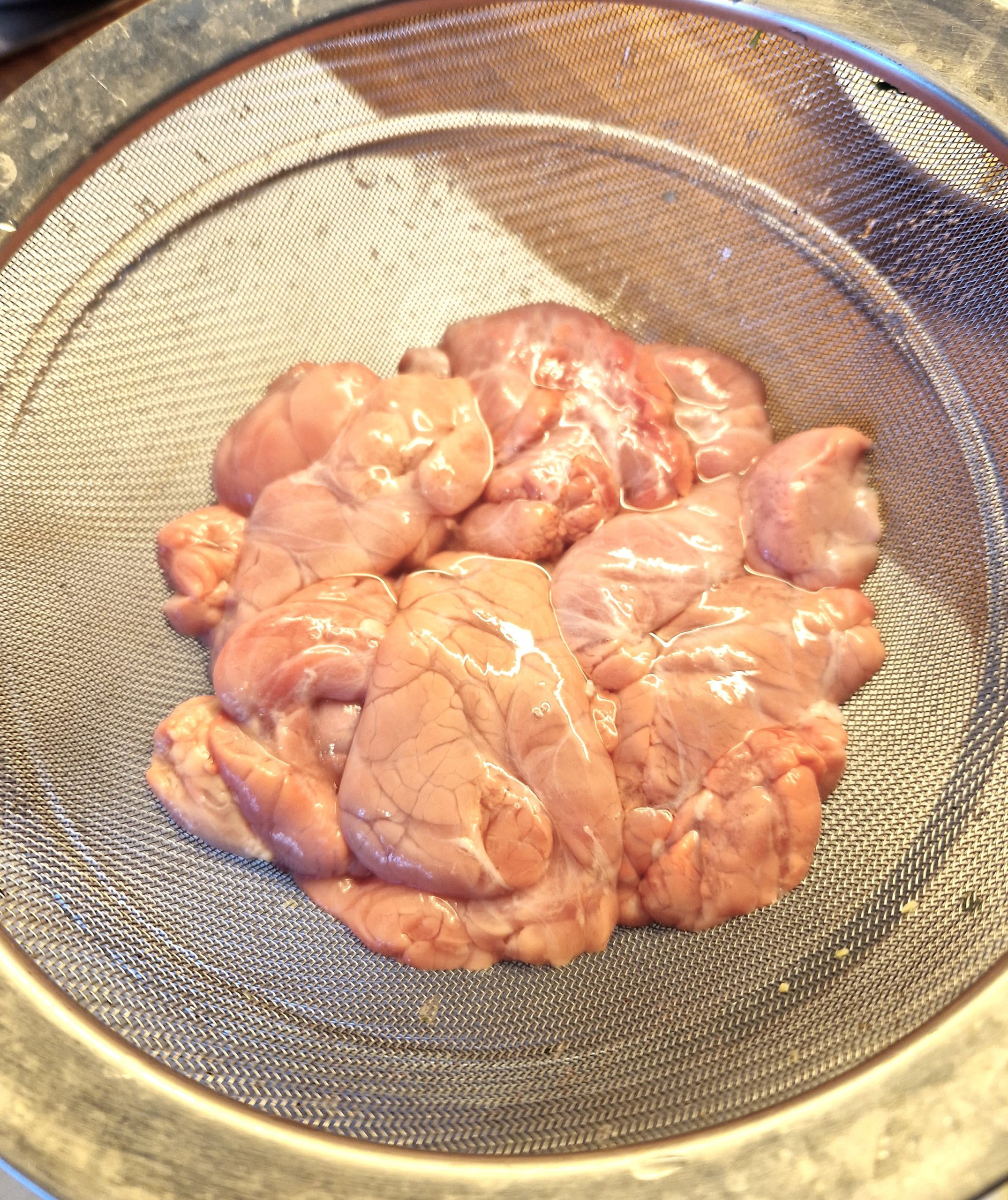
Living need the Pyrenees, where sheep’s milk cheese is king, inevitably means spring lamb. Ewes need to have lambs to continue producing milk, and the male lambs are of very little use on a dairy farm. Thus in the spring, when they are between 30 and 50 days old, the male lambs are culled from the herd and sold as milk-fed or spring lamb. Most of the Pyrenean production of spring lamb goes to Spain, where it is a much anticipated delicacy. A good portion finds it’s way onto tables in France.
In passing by the triperie at the Tuesday market…but wait, you say, what is the triperie? In France, “le boucher” sells meat, including beef, lamb, veal and sometimes pork and poultry He does not, however, sell anything that we would consider offal or specialty meats. These are the purview of “le tripier”, whose offerings include tripes, organ meats (heart, liver, kidneys, sweetbreads, lungs, brains) but also a long list of odds and ends including cheeks, necks, feet, tails, ears and heads. The tripier also sells certain cuts of meat that would seem to be more in the butcher’s wheelhouse, like hanger and skirt steak, don’t ask me why. If a person makes their own charcuterie at home, you make the acquaintance of the tripier, as he sells, the pork fat, neck, liver and casings that are so vital to that art.Orthez doen’t have a permanent triperie, but each Tuesday, a mobile tripe vendor parks his truck as part of the weekly outdoor market. This Tuesday, lamb sweetbreads where featured, so I jumped at the chance to prepares some for our lunch.
Lamb and veal sweetbreads are prepared in basically the same way, except that the larger veal sweets cook longer. First, they are soaked in cold water and vinegar to purge them, removing any bitterness. Then, they should be precooked either by blanching or braising, then chilled until ready to use in any number for recipes. With the smaller lamb sweetbreads, I prefer to braise them since, when finished, you have the braising liquid to use in your sauce. Note that, after the initial cooking, veal sweetbreads must be peeled to remove the outer membrane, while this is unnecessary for lamb sweetbreads. For a full discussion of the pros and cons of both pre-cooking methods, see Julia Child’s “Mastering the Art of French Cooking” one of the few cookbooks I have found that actually gives much consideration to sweetbreads. Julie devotes 6 entire pages to them.
Spring Lamb Sweetbreads with Cream and Leeks
1) Soak sweetbreads in cold water and vinegar (use about 1/2 cup white or red wine vinegar for 2 quarts of water) for several hours or overnight.
2) Gently saute chopped carrots, celery, leeks and garlic, add fresh bay, thyme, peppercorns and cloves. I also included the leftover rind from a couple slices of cured pork belly, but I would omit this instead of substituting with bacon as the smokey flavor will be too strong.
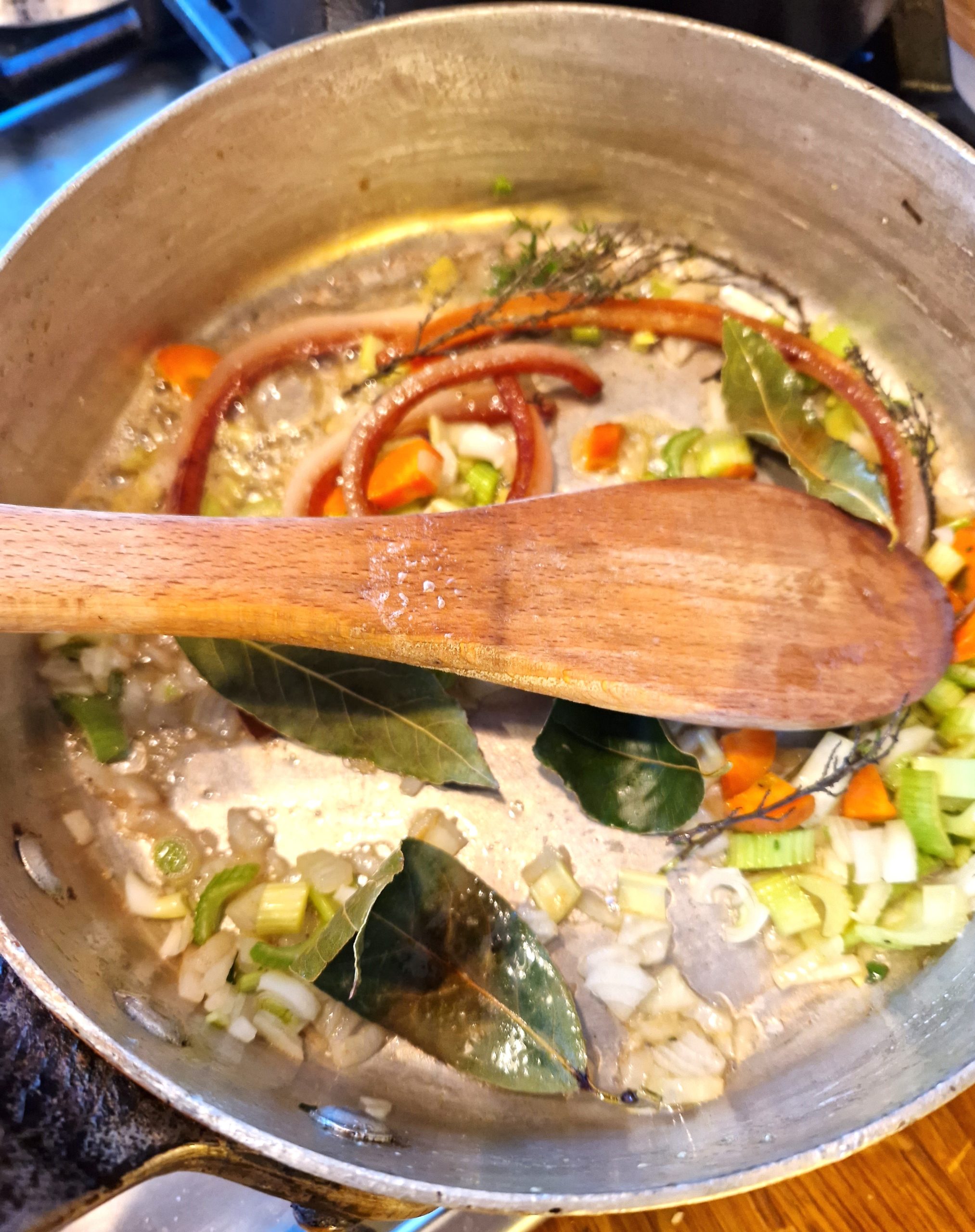
3) When the veggies have softened a bit without color, add the drained sweetbreads, a splash of white wine (I used a sweet Jurancon) and enough chicken stock to almost cover.
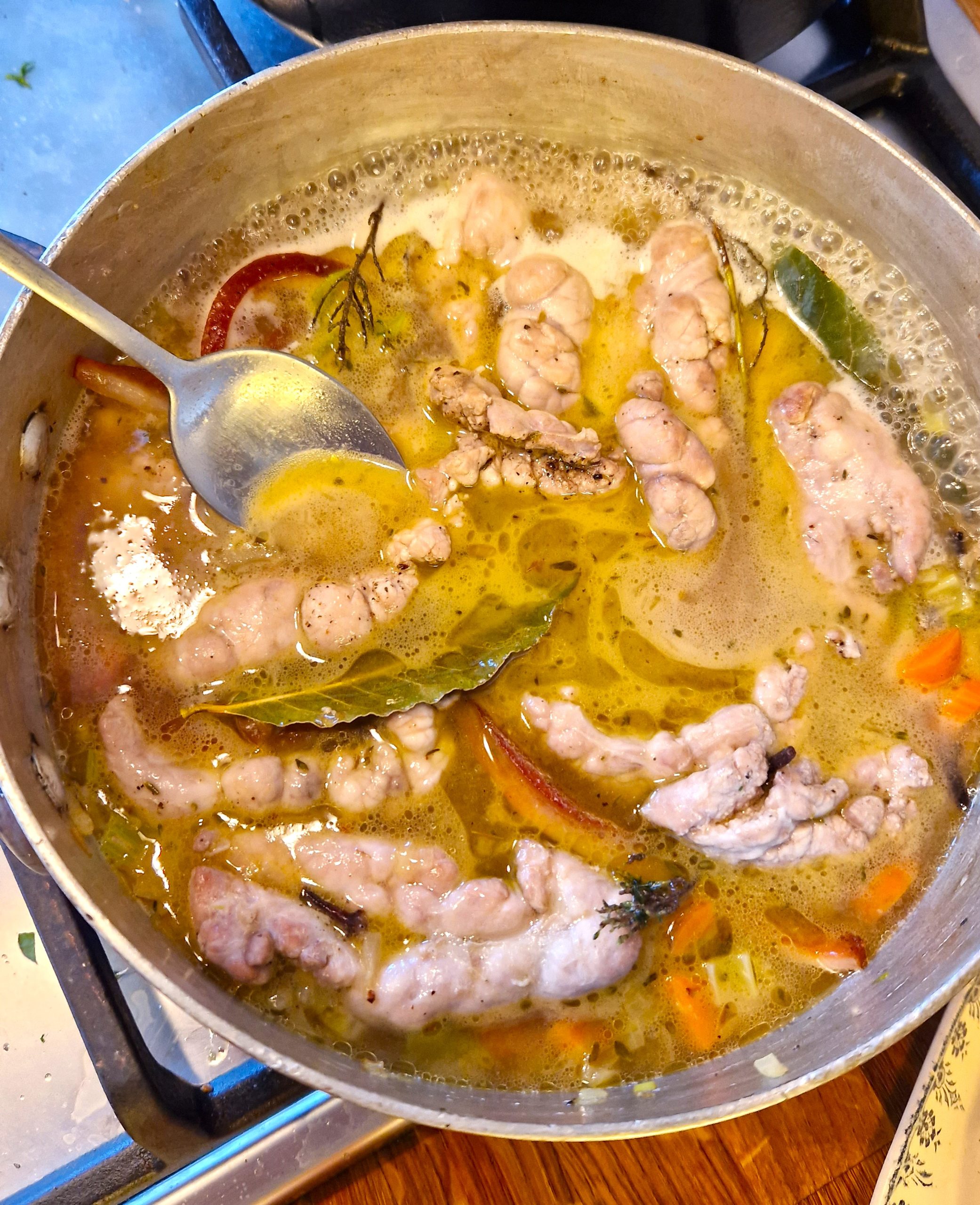
4) Bring to a very gentle simmer and continue cooking until the sweetbreads are completely cooked through and the liquid has reduced a bit, about 12 minutes. Turn the contents of the pan into a dish and cool.
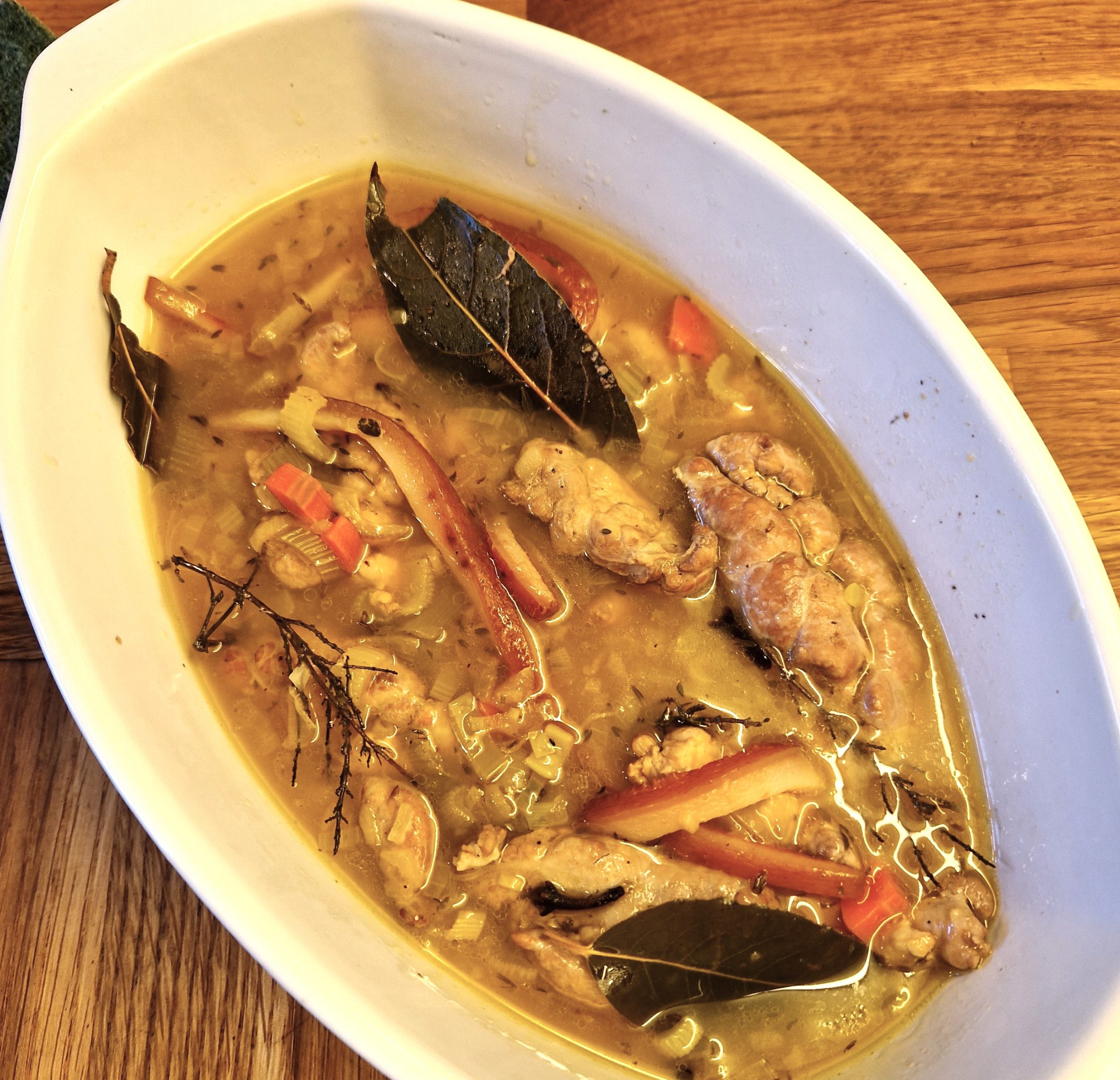
5) When ready to use, remove the sweetbreads and set aside. Strain the remaining liquid, discarding the aromatics. From this point, you can finish the sweetbreads in any number of ways.
6) Saute slices of cleaned leeks in a butter in a heavy pan. Add the cooked sweetbreads and their cooking liquid, bring to a simmer and cook until the liquid is almost completely reduced. Add heavy cream and simmer to sauce consistency.
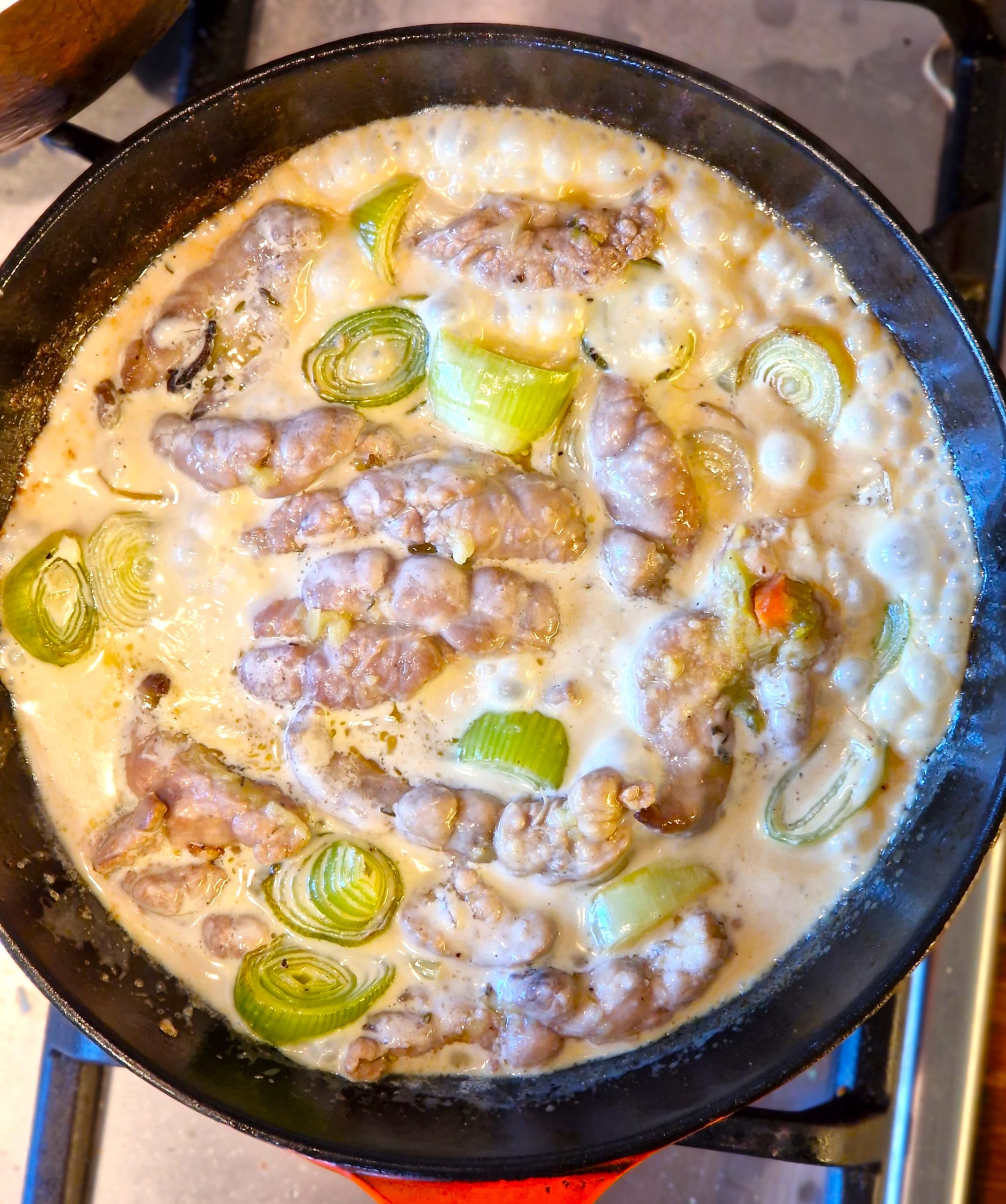
7) Season with salt, pepper and a little grated fresh nutmeg. Remove from heat, add a big knob of cold butter and stir continuously until it is incorporated. Serve immediately with buttered egg noodles.